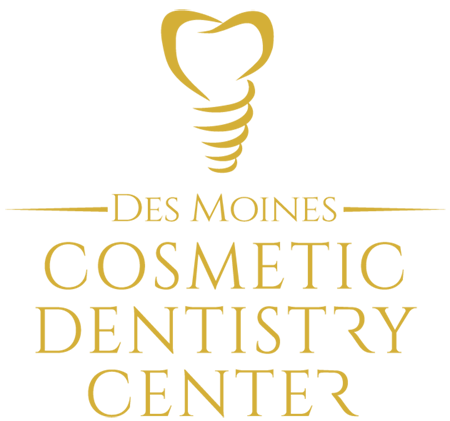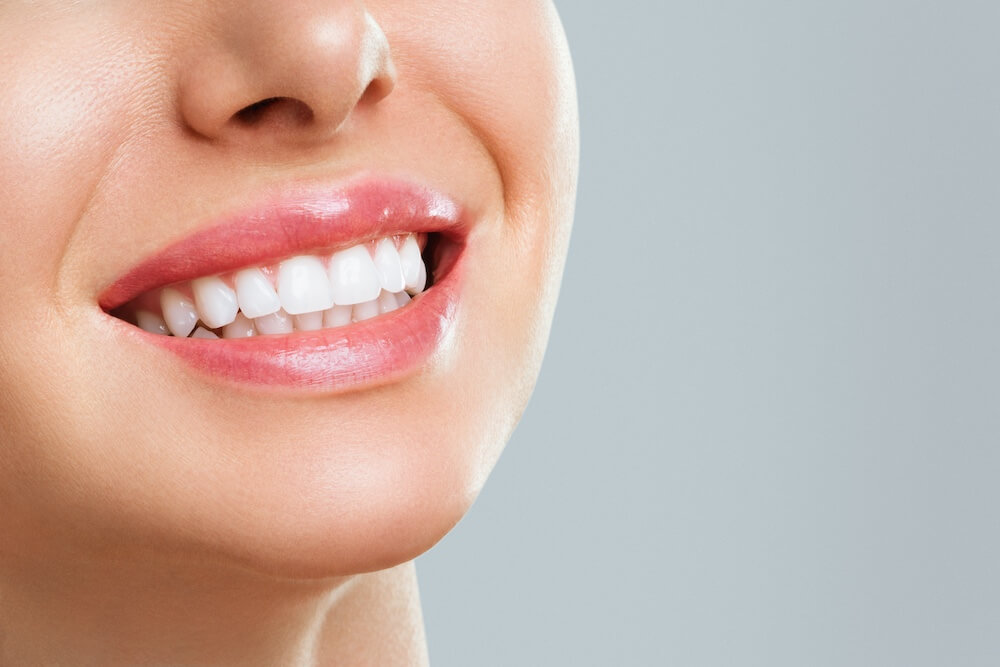Are Veneers Painful?
Dental veneers are thin shells placed on your teeth to improve their appearance. You might wonder if getting veneers hurts. The good news is that veneers are usually not painful. Thanks to modern techniques and numbing medication, you should feel little to no pain during the procedure. You may experience only mild sensitivity afterward as your mouth adjusts.
“I always numb the area first so you feel comfortable,” says Stephen Forrest, D.D.S., at Des Moines Cosmetic Dentistry Center. “You might notice some pressure during the prep, but it should never feel like pain.” Any mild soreness in the days after is normal and goes away quickly.
What Are Dental Veneers?
Veneers are ultra-thin covers made of porcelain or composite that a dentist bonds to the front of your teeth. Veneers fix cosmetic issues like chips, stains, gaps, or minor misalignment. Porcelain veneers are very thin and durable, giving a natural look. Composite veneers are another option that is less durable but usually cheaper. It’s important to know that veneers are not permanent. Once you get them, you will eventually need replacements over the years. However, when they are on your teeth, veneers can dramatically improve your smile with very little pain.
The Veneer Procedure: Step by Step
Getting veneers usually takes a few visits to your dentist. Here’s what to expect.
Initial Veneer Consultation
At first, you meet your dentist to talk about your smile goals. They will examine your teeth, take X-rays or impressions, and decide if veneers are right for you. This appointment is completely pain-free. It’s just talking and planning.
Tooth Preparation
In the next visit, your dentist prepares the teeth. They remove a tiny layer of enamel, often less than half a millimeter, to make room for each veneer. This step ensures the final veneers fit flush and don’t look bulky. Before any drilling, the dentist uses local anesthesia. You will be numb, so you feel only a slight vibration or pressure, not pain. In fact, you might feel like there is a dental buzz, but it shouldn’t hurt at all.
As Dr. Forrest notes, “We use anesthesia so carefully that most people don’t feel a thing except gentle pressure.”
Impressions and Temporary Veneers
After the teeth are prepared, your dentist takes impressions or scans of your teeth. These molds go to a lab that makes your custom veneers. While you wait, usually a week or two, the dentist often places temporary veneers on your teeth. These protect your prepared teeth and let you see how your new smile will feel. Some patients notice mild sensitivity under these temporaries. For example, hot or cold drinks might make teeth twinge slightly. This is normal and usually goes away soon. Over-the-counter pain relievers or avoiding very hot or cold foods can help during this stage.
Veneer Placement
When your permanent veneers are ready, you return for the final appointment. Your dentist will remove the temporaries, clean your teeth, and check the fit and color of the new veneers. A special bonding cement and light are used to attach each veneer to a tooth. This step is generally painless. No anesthesia is usually needed now. You might feel a bit of pressure when the veneers are pressed on, but the process is quick.
After bonding, your bite will be checked and minor adjustments made so everything feels natural. Dr. Forrest says, “During placement, the veneers just click into place. It’s a simple, comfortable step, and you won’t feel real pain, maybe just a tiny bit of pressure.”
Throughout all these steps, patient comfort is a top priority. Dentists commonly use local anesthetics and even sedation if you feel anxious. Sedation options like nitrous oxide or oral sedatives can help you relax. This means you won’t be dealing with dental pain or fear. You’ll only focus on getting that beautiful new smile.
Sensation During the Procedure
Will it hurt during the prep? No. Thanks to anesthesia, you should feel nothing sharp or painful. You may feel the drill or laser on your teeth, but this feels like vibrations or gentle pressure, not real pain. Many patients compare the sensation to having an electric toothbrush on a tooth.
If you do feel uncomfortable at any point, just let your dentist know. They can give you more numbing or pause. Dr. Forrest emphasizes, “My goal is your comfort. If you feel anything sharp, I stop immediately and numb more. Most people only tell me, ‘I feel pressure,’ and they’re surprised there’s no pain.”
Even drilling speed and technique matter. Modern tools and handpieces are fast and smooth. Dentists often use whisper-quiet drills or lasers that remove enamel very precisely. The enamel layer we remove is thin, often compared to the thickness of a fingernail, and dental nerves lie deeper. All dental work takes place above gum level, so no nerves are touched, and there should be no pain. In short, the procedure is designed to be as painless as possible.
After the Veneers: Healing and Sensitivity
Once the veneers are on, your smile instantly looks great. Afterward, you may feel some mild soreness or sensitivity, but this is usually minor and temporary. Your gums might feel tender for a couple of days where the dental work was done. You might also notice your teeth feel a bit thicker or different. This is just your mouth adjusting to the new shape.
Temperature Sensitivity
It’s common for teeth to be slightly sensitive to hot or cold right after. Because a little enamel was removed, the tooth can feel temperature more. You might wince at very cold drinks or hot soup initially. This sensitivity is usually mild. It will gradually fade over the first two weeks. If needed, you can use toothpaste made for sensitive teeth or take an ibuprofen to help. Avoid very hot or cold foods for a few days if it bothers you.
Bite Adjustment
Your bite may feel off at first. You’ve added a layer, the veneers, to your teeth, so chewing forces can feel different. It’s normal to spend a day or two readjusting. You might notice that eating feels funny or your jaw needs to shift slightly. This should settle quickly as your brain adapts to the new tooth shape.
Gum Soreness
A mild gum ache is possible, especially if you got many veneers at once. This generally disappears within a few days with normal brushing and gentle care. Saltwater rinses can soothe sore gums.
Overall, most patients say the adjustment period is quick and easy. In the words of one dentist, your teeth have become thicker and more solid. It’s an unusual feeling, but hard to call it uncomfortable or unpleasant. You should not have sharp toothaches or throbbing pain. If such pain happens, for example, when biting down, call your dentist.
Dr. Forrest adds, “After the appointment, we always follow up to see how you’re doing. I tell patients, ‘If you notice any pain beyond a day or two, give us a call.’ We can make quick fixes if a veneer needs adjusting. But usually, patients say their smile feels great very soon after.”
Tips to Minimize Discomfort
Here are some simple tips to help your mouth heal comfortably after veneers:
- Take it easy with hot and cold foods. For the first couple of days, try lukewarm foods and beverages. Avoid ice-cold drinks or very hot coffee right away.
- Eat soft foods. Stick to softer foods and avoid hard, crunchy, or chewy items for a few days. This helps your mouth adjust without extra pressure.
- Use sensitive toothpaste. A toothpaste for sensitive teeth can help ease any mild tingling.
- Take over-the-counter pain relievers if needed. A dose of ibuprofen or acetaminophen can greatly reduce soreness. Follow the instructions and take it while you’re awake, not on an empty stomach.
- Warm saltwater rinses. Gently rinsing your mouth with warm salt water a few times a day can soothe gum tissue.
- Maintain good oral hygiene. Continue brushing gently and flossing. Be careful around the veneers, and rinse after meals to keep the area clean.
- Stay relaxed. Try to be comfortable, use ice packs on your face if you have swelling, and rest. If you feel anxious, remember it will soon be over, and your smile will be beautiful.
These steps help prevent discomfort from becoming real pain. If you follow your dentist’s instructions and practice good care, you should feel fine very soon.
When to Contact Your Dentist
After a few days, you should feel pretty much back to normal. However, if you have any of these signs, call Dr. Forrest or your dentist right away.
- Sharp or increasing pain. If you wake up with a new toothache or the sensitivity worsens instead of improving, let your dentist know.
- Lasting sensitivity beyond two weeks. Occasional twinges are normal, but if teeth still hurt after a week or two, it could mean an adjustment is needed.
- Loose or chipped veneer. If a veneer seems to move or has a chip, get it checked so the tooth underneath doesn’t become sensitive.
- Bite feels wrong. If chewing feels uneven or your bite still seems off, the dentist can slightly reshape the veneers. An improper bite adjustment is an easy fix once spotted.
- Gum or nerve pain. Severe pain in the jaw, ear, or face is not normal. It could hint at a different issue, like a cracked tooth underneath. It’s important to get it examined.
Dr. Forrest warns, “Some patients hesitate to call because they think normal discomfort should just subside. But if you’re at all worried, give us a call. We’d rather check and make you comfortable than let you suffer.”
Most people have no serious pain after veneers. These check-ups are just a safety net.
Your New, Beautiful Smile
The bottom line is that getting veneers should not be a painful experience. Most of the pain people worry about is actually anxiety about the unknown. Once you know the steps, it’s clear. The drilling is done under anesthesia, and the rest is quick bonding.
Stephen Forrest, DDS, is committed to making this process easy on you. “Your comfort comes first,” he emphasizes. “We take care of the little things, numbing, gentle technique, and even sedation if needed, so that by the time you see your new smile, you hardly remember any discomfort.”
With Dr. Forrest’s care and modern dental tools, you can look forward to stunning results without the fear of pain. Enjoy your beautiful new smile, and remember, Dr. Forrest and the team at Des Moines Cosmetic Dentistry Center are here to help you every step of the way. As Dr. Forrest says, “Helping you smile without pain is one of the best parts of my job.”

